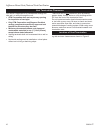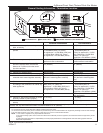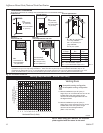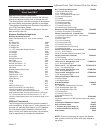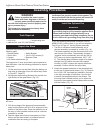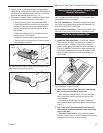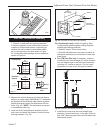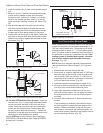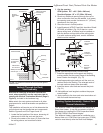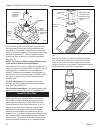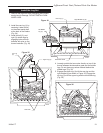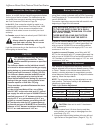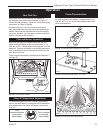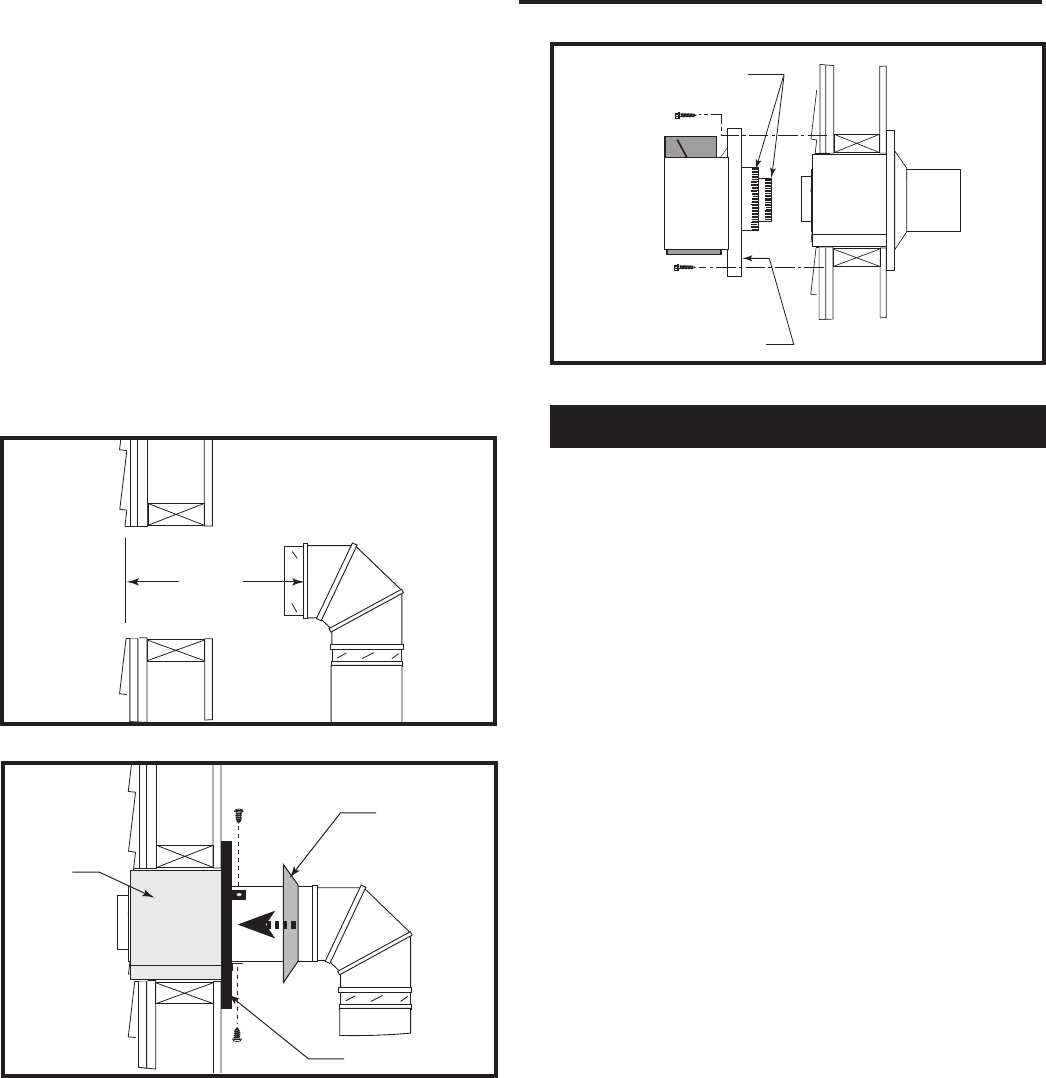
1818
Jefferson Direct Vent/Natural Vent Gas Heater
30004177
6. Install the elbow using 3 sheet metal screws at each
joint.
7. Measure, and cut if needed, the appropriate length
of pipe section needed to make the connection
through the wall. Include a 2” overlap; i.e. from the
elbow to the outside wall face, about 2” or the dis-
tance required if installing a second 90° elbow. (Fig.
25)
8. Slip the wall plate and trim collar over the interior
end of the horizontal pipe and install into the wall
sleeve. Seal the joint inside the wall plate if needed
to keep cold air from being drawn into the home.
9. Connect the horizontal pipe to the elbow. Fasten the
wall plate to the pipe with three sheet metal screws.
Slide the trim collar up against the wall plate to cover
the screws. (Fig. 26)
ST215
measure thru wall
12/6/99 djt
X
ST215
Fig. 25 Measure the horizontal length.
ST216
install pipe thru wall
12/6/99 djt
Trim Collar
Wall
Sleeve
Wall Plate
ST216
Fig. 26 Install the horizontal pipe and wall plate parts.
10. For both CFM and DuraVent Systems: Install the
vent terminal. (Fig. 27) Apply high temperature seal-
ant one inch from the ends of the inner and outer
collars. Guide the inner and outer vent termination
collars into the adjacent pipes. Double check that
the vent pipes overlap the collars by 2”. Fasten the
termination to the wall with the screws provided, and
caulk the joint with weatherproof sealant.
11. For CFM only:
Install Charcoal Gray Pipe Rings
(#7FSDRG) or Polished Brass Pipe Rings (#7FSDRP)
at pipe joints, if desired.
ST217
install wall terminal
12/6/99 djt
Seal Both
Terminal Ends
Caulk Plate Joint with
Weatherproof Sealant
ST217
Fig. 27 Install the vent terminal.
Vent Termination Below Grade
Install Snorkel Kit #7FSDVSKS when it is not possible
to meet the required vent termination clearances of 12”
(305 mm) above grade level. The snorkel kit will allow
installation depth of down to 7” (178 mm) below grade
level. The seven inches is measured from the center of
the horizontal vent pipe as it penetrates the wall. If the
venting system is installed below grade, a window
well must be installed with adequate and proper
drainage. (Fig. 28)
NOTE: Be sure to maintain side wall clearances and
vent run restrictions. Refer to Pages 7,8, 9, Figures 3,
4, 7, 8.
1. Establish the vent hole through the wall.
2.
Remove soil to a depth of approximately 16” (406 mm)
below the base of the snorkel. Install a window well
(not supplied). Refill the hole with 12” (305 mm) of
coarse gravel and maintain a clearance of at least 4”
(102 mm) below the snorkel. (Fig. 28)
3. Install the vent system as described on pages 15-18.
4. Be sure to make a watertight joint around the vent
pipe joint at the inside and outside wall joints.
5. Apply high temperature sealant around the inner
and outer snorkel collars. Join the pipes and fasten
the snorkel termination to the wall with the screws
provided.
6. Level the soil to maintain a 4” clearance below the
snorkel.
If the foundation is recessed, use extension brack
-
ets (not supplied) to fasten the lower portion of the
snorkel. Fasten the brackets to the wall first, and
then fasten to the snorkel with self-tapping #8 x 1/2”
sheet metal screws. Extend the vent pipes out as far
as the protruding wall face. (Fig. 29)



